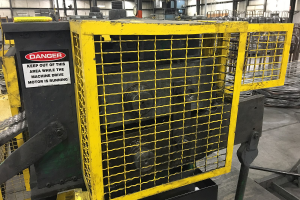OSHA budget plan: Agency still pushing enforcement, but pulls back in one area
With the President trying to accommodate business on the issue of excessive regulation, OSHA seems to be trying to walk a tightrope in its budget request for 2012.
The agency is asking for 25 additional compliance officers. That is in keeping with a two-year trend of increased emphasis on enforcement. OSHA chief David Michaels also gave other indications of continued pressure on enforcement in a webchat Monday:
• The agency’s top priority, he said, is a putting into place an Injury and Illness Prevention Program, which has become known as I2P2. The agency is proposing that every company under its jurisdiction be required to develop a safety program that meets specific OSHA requirements.
As I have blogged previously, while it is an excellent idea to require every company to have a safety program, it is not a good idea to force companies to follow specific requirements. Businesses vary too much to make that practical.
• The agency is also proposing to expand its Site Specific Targeting program. That program currently targets companies with 40 or more employees that have high injury rates. OSHA is proposing to broaden the program to include companies with 20 or more employees.
“By targeting employers with high injury rates who have 20 or more employees, we will be impacting a far larger group of workplaces, while actually conducting a slightly higher number of inspections,” Michaels said. “In 2012, we project about 2,000 SST inspections compared to 1,780 conducted in FY 2010.”
Backing off on Voluntary Protection Program
On the other hand, Michaels said OSHA was backing away from a plan to reduce support for the Voluntary Protection Program. This program encourages voluntary cooperation between companies and OSHA.
OSHA had proposed eliminating the appropriation to run the program and redirecting the funding elsewhere. In its place, OSHA wanted a fee-based system to fund the program. But Michaels said Monday, “We are no longer proposing alternative funding for the Voluntary Protection Program (VPP). OSHA will continue to fund VPP out of the federal compliance assistance budget activity.”
This pullback follows two other retreats on enforcement last month, when OSHA said it was withdrawing both a noise control proposal and a plan to add an separate ergonomics column to the injury and illness recordkeeping log companies are required to keep.
Withdrawing those two proposals and restoring the voluntary cooperation program with industry will go a long way to righting the “excessive” regulation that the President pointed to as a barrier to economic growth. Further moderation of enforcement zeal would help as well.


